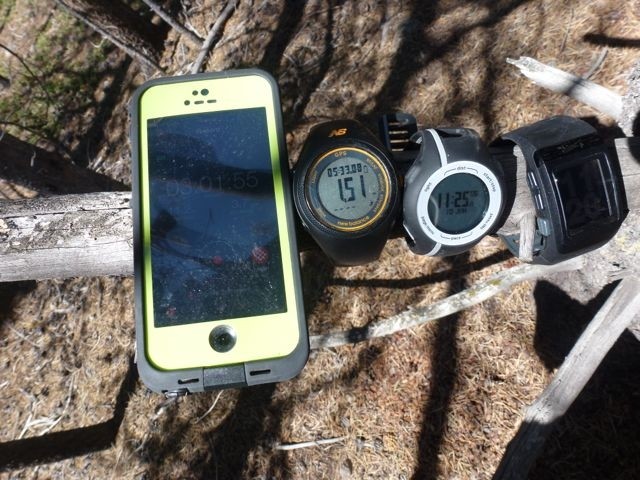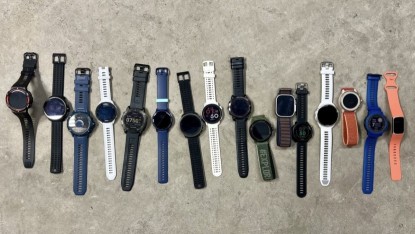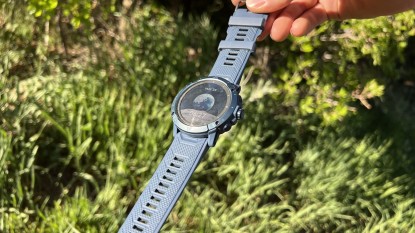New Balance GPS Trainer Review
Our Verdict
Our Analysis and Test Results
Hands-On Review
As a product from a smaller, primarily footwear-oriented company, the New Balance GPS trainer is an impressive effort. It lacks the polish and refinement of the products from the electronics companies, and doesn't have the social and motivational features of the Nike+ Sportwatch GPS, but it fills a small niche.
Ease of Use
With data only viewable on the device, the overall ease of use score suffers a bit. Most of our testing team, and most athletes in the market for a fitness tracking device, will wish to collate and save their data digitally. If you are in this category, but looking for a simple affordable device, check out our Best Buy winning Garmin Forerunner 230. However, if uploading data to your pc or to the web is not at all important to you, you can save a few further dollars with the New Balance watch. As with all of the tested gps devices, data management is the primary determinant of a watch's ease of use. Otherwise, the New Balance is easy enough to use. You'll lean heavily on the written instruction manual, but you will get it down soon enough.
Features
The New Balance device is an interesting combination of features. The watch itself is a pretty simple time and location tracker. Very little frills characterize this product. However, New Balance's inclusion of a heart-rate band increases the scores considerably. If monitoring your exertion level during a run is crucial to you, yet you still have a tight budget, the GPS Trainer can save you almost a hundred dollars over the competition. Again, as compared to our Best Buy winner, the New Balance with heart rate monitoring is quite a bit less expensive. As tested, the Garmin Forerunner is slightly more expensive. With the after-market heart rate band, it is quite a bit more.
Accuracy
Interestingly, while the New Balance feel and feature set is quite a bit more budget-oriented, the accuracy doesn't suffer at all. Across our entire test roster, individual device accuracy varied by less than three percent. While the New Balance was tied with the Nike+ Sportwatch for the poorest accuracy, the three percent margin of error in these devices is hardly a problem for most athletes.
Ease of Set-up
With an “old school” watch interface, the GPS Trainer takes considerably more time and effort to set up than the other tools in our test. All of the other companies have clearly invested a fair amount of time in making their user interfaces and setup intuitive and modern.
Durability
Across the board, in the most important ways, durability of our tested devices was excellent. We experienced no complete failures. However, some watches suffered from short-term failure. The primary short-term failure was a lack of data integrity. Basically, if the watch is vulnerable to suspension or erasure of your in-activity data stream, it's durability score suffers. Without a button lock, the GPS Trainer regularly changes data fields and stops, starts, or erases your information. This attribute, while not an actual failure of the hardware or software, is undesirable at best. On every “normal” run, not to mention during more vigorous activity, at least a few inadvertent button pushes would occur.
Portability
The GPS Trainer isn't the smallest nor is it the largest in our test. It fits it's instrumentation in a package that is comparable with the rest of the field.
Best Applications
This is an excellent device for the casual trainee looking for real-time heart rate data on a budget.
Value
If you can work around the quirks and limitations of this watch, it is an excellent value.
Conclusion
New Balance, especially for a shoe company, comes very close to creating a viable training watch. However, in the opinion of our testing team, the lack of a data-upload function and the vulnerability of the non-locking buttons makes the extra dollars spent on one of the other tested devices more than worth it.








